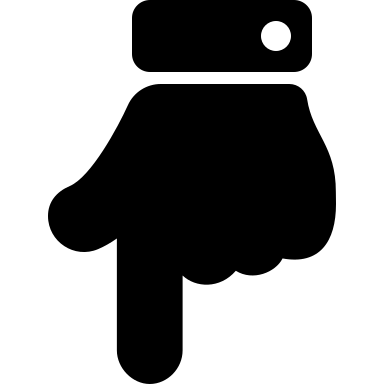As a cold working process, metal stamping is widely evaluated in many fields such as automobiles, home appliances, and aerospace. It processes metal materials into parts of the required shape and size through molds, and is efficient, precise, and important. However, the quality and effectiveness of metal welding depends on the materials used.What Materials Are Used in Metal Stamping?And what are the properties of these materials?
What is Metal Stamping?
Metal stamping refers to the process of processing metal sheets into the desired shape in sheet metal stamping dies. Its principle is mainly to use the mechanical force of the punch machine to process materials into the required shape. The stamping machine mainly consists of a frame, slider, mold and transmission device. Whenthemetal stamping machineis working, the sheet metal is first placed between the molds, and under the action of mechanical force, the sheet metal is processed into the required shape. Different stamping dies can be processed intometalstampings of different shapes.

What Materials Are Used in Metal Stamping?
Aluminum:Aluminum is a relatively low-cost non-ferrous metal with an excellent strength-to-weight ratio, enabling the production of durable, strong and lightweight components. Because aluminum can provide high mechanical strength and good electrical conductivity, it is widely used as an important structural material in aircraft components and many other equipment. Not only is aluminum corrosion-resistant and non-toxic, it does not require additional coatings during the precision machining stage. However, through anodizing, the appearance of aluminum is enhanced while also increasing its resistance to corrosion. Aluminum can also improve engine performance and reduce noise. Aluminum's lightweight strength plays a vital role in the automotive manufacturing and aerospace industries.
Stainless Steel:Stainless steel is a ferrous metal that is rich in chromium, molybdenum and nickel, providing excellent properties for metal stamping such as corrosion resistance, non-magnetic properties, excellent wear resistance, and does not require electroplating or heat treatment. In addition, this steel has high thermal conductivity and good mechanical properties. Stainless steel is oftenchosen formetal stampedparts in the aerospace, defense, lawn and garden sealing equipment, and pipe and valve industries.
Mild steel:Mild steel is available in both flat and coil formats, which offers severaladvantages formetallic stamp, including low cost and high strength. Low carbon steel can also be made into thin or thick plates through rolling or welding processes. It has good plasticity and toughness, is easy to process and form, and is suitable for making parts with complex shapes. Mild steel is a very durable metal that can be used to make a variety of parts at a low unit price and is often used in sealing technology, automotive, and lawn and garden applications.
Copper:Copper is an easy-to-shape material, making it an excellent choice for manufacturing one-piece, seamless parts and is particularly suitable for cold forming techniques. Copper is a low-maintenance and long-lasting metal material that is corrosion-resistant and has natural hygienic properties, making it ideal for use in the medical, food and beverage industries.
Brass:Brass is an alloy composed of copper and zinc. It inherits many of the advantages of copper, such as surface finish, corrosion resistance and conductive properties, which makes it widely used in the electronic field.

What Factors Influence Metal Stamping Material Selection?
When selecting materials forstamping on metal, it is important to consider the specific properties required of the finalmetal stamped product.
- Durability:Durability refers to the ability of a material to withstand wear, fatigue, and other forms of stress. The level of durability required depends on the intended use of the end product. For example, products exposed to frequent use or harsh environments will require more durable materials.
- Formability:Formability refers to the ability of a material to be formed into different shapes without cracking or breaking. The level of formability required depends on the complexity of the part to be stamped and the type of stamping process to be used.
- Thickness:The thickness of a material affects its strength, formability, and cost. Thicker materials are stronger but less formable, while thinnermetal stampermaterials are more formable but less durable.
- Hardness:Hardness refers to a material’s resistance to deformation, scratching, or abrasion. The required hardness depends on the intended use of the final product. For example, products with high levels of wear require harder materials.
- Corrosion Resistance:Corrosion resistance refers to the ability of a material to resist degradation caused by exposure to moisture, chemicals, or other corrosive substances. The required level of corrosion resistance depends on the intended use of the end product and the environment to which it is exposed.
- Cost:The cost of materials is an important factor to consider when choosing. On the premise of ensuring performance, lower cost materials should be selected to reduce production costs.
How To Choose The Right Metal Stamping Material?
Choosing the rightmetal stampingmaterialsrequires careful evaluation of several key factors. Here are the main steps:
1.Determine the end-use application
The first step is to determine the intended use of the final product. This will help determine environmental conditions, load requirements, and other factors that influence material selection. For example, if the product is used in a high-temperature environment, it may require materials that are resistant to high temperatures.
2.Identify required characteristics
Once the end-use application has been identified, the next step is to determine the required material properties. This includes strength, formability, corrosion resistance and hardness. These properties will depend on the specific requirements of the end-use application.
3.Consider the cost
Cost is always a consideration when choosingstamping on metalmaterials. For example, a material that is strong, formable, or resistant to corrosion may be more expensive than a material with lower properties. Therefore, balancing cost with desired material properties is important to ensure the final product is effective and cost-effective.

4.Evaluate the manufacturing process
The final step is to evaluate themanufacturing process of themetal stampedmaterial.Different stamping processes require different material properties, so it is important to consider the specific process being used. For example, if the stamping process involves deep drawing or other complex forming operations, a material with high formability may be required.
Why Choose Longsheng To Provide Metal Stamping Services?
1.Metal stamping services
Our custom metal stamping and forming services are suitable for multiple industries, including automotive, aerospace, manufacturing and more, to meet the different needs of our customers. Our team has extensive experience and expertise to provide customers with high-quality metal stamping forming services and technical support. Our metal stamping services can provide prototyping solutions for custom metal parts, contact us today to get started on your project.
2.Metal stamping parts production base
Jusheng has a professional team with strong skills and rich experience, which can provide customers with professional technical support and after-sales service. We adhere to the principle of "quality first, customer first" and serve our customers wholeheartedly. If you have any processing needs or questions, please feel free to contact us. We look forward to cooperating with you!
FAQs
1.What material is used for stamping?
Steel, aluminum, brass, and copper are commonly used. CRS steel, such as 1008, 1010 or 1018 is very popular; universal materials are very suitable for cold molding; Aluminum has low density, high strength, good processing performance and excellent performance. It is often used in metal stamping. Brass is an alloy of copper and zinc that is ductile, hard, and resistant to corrosion. It is common in automotive and electrical applications such as making terminals, contacts, brackets and other components.copper Including C110, it is a powerful conductor and is easy to form.
2.What metals are used in metal stamping?
The most commonly used metals in metal stamping include aluminum, stainless steel, mild steel, copper, and brass. Each of these metals has its own characteristics, such as: Aluminum: has an excellent strength-to-weight ratio, is corrosion-resistant and non-toxic, and requires no coating during finishing. It is widely used in aviation, aerospace, new energy vehicles and other fields. Stainless Steel: Contains high amounts of chromium, molybdenum and nickel, making it corrosion-resistant, non-magnetic, wear-resistant, and heat-treatable. Suitable for aerospace, defense, piping and valve industries. Mild steel: including flat sheets and coils, low cost, high strength, very durable, often used in sealing technology, automobiles and other fields. Copper: Easily formed, corrosion-resistant and has natural hygienic properties, making it suitable for use in the medical, food and beverage industries. Brass: A copper-zinc alloy that is smooth, corrosion-resistant, and provides electrical conductivity for a wide range of electronic applications.
3.What materials are used in stamping tools?
Commonly used stamping die materials include: steel: such as carbon tool steel, low alloy tool steel, high carbon high chromium or medium chromium tool steel, medium carbon alloy steel, etc. Carbide: It has higher hardness and wear resistance than other mold steels, but has poor bending strength and toughness. Steel-bonded cemented carbide: Iron powder is added to alloy element powder as a binder, and titanium carbide or tungsten carbide is used as the hard phase, which overcomes the shortcomings of poor toughness and difficult processing of cemented carbide.
4.What do you need for metal stamping?
In addition to suitable metal materials, metal stamping also requires the following elements.stamping molds: designed and manufactured according to the shape and size requirements of stamping parts; stamping equipment: such as presses, used to provide sufficientstampingforce to complete the stamping process; auxiliary Equipment and tools: such as feeding devices, positioning devices, lubricants (to reduce friction and wear), etc.; technical support: including stamping process design, mold design and manufacturing, production management and other technical support.
Summary
Choosing the right materials is critical to high-quality, cost-effective metal stamping. By considering the necessary factors and working with a trusted material supplier, the right material can be selected to meet specific requirements and provide reliable, high-quality stampings.
Whenselecting metal stamping materials, factors such as durability, formability, thickness, hardness and corrosion resistance should be considered. Additionally, the end-user application and specific manufacturing processes must be evaluated.
Working with a trusted material supplier is also critical to successful metal stamping. A reputable supplier can help ensure that the material meets required specifications, is of consistent quality, and can be successfully stamped into the desired shape.
Disclaimer
The content on this page is for reference only.LSdoes not make any express or implied representation or warranty as to the accuracy, completeness or validity of the information. No performance parameters, geometric tolerances, specific design features, material quality and type or workmanship should be inferred as to what a third party supplier or manufacturer will deliver through the Longsheng Network. It is the responsibility of the buyerseeking a quote for partsto determine the specific requirements for those parts.Pleasecontact usfor moreinformation.
LS Team
This article was written by multiple LS contributors. LS is a leading resource in the manufacturing sector, withCNC machining,sheet metal fabrication,3D printing,injection molding,metal stamping, and more.



